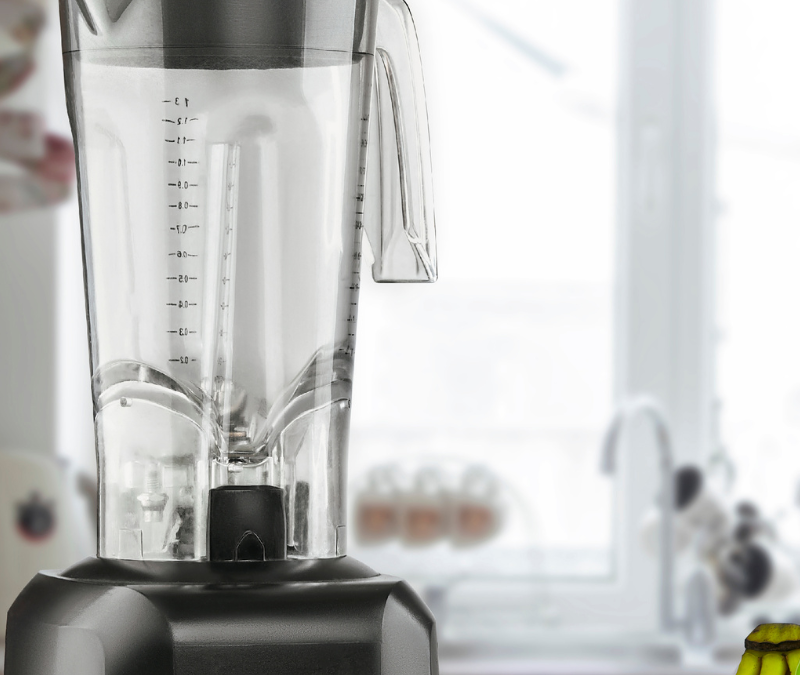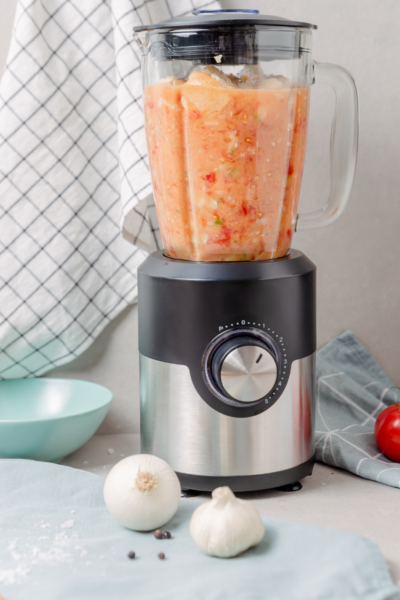Introduction:
Dear Caregiver,
Your loved one or the person you are caregiving for just got a new diagnosis of dysphagia (swallowing problem) and recommendations were made to puree their food. You are overwhelmed and worried about how to do that and what tools or equipment you may need.
This guide will help and reassure you that likely you already have in your kitchen the essential tools needed to perfectly puree any food.
People with dysphagia are at increased risk for medical complications. This may be caused by choking, aspiration pneumonia and/or exacerbation of other respiratory problems.
This type of diet is recommended by a provider such as your primary care physician, dietitician, oncologist, gastroenterologist or speech-language pathologist.
It is natural to have mixed feelings about being on a puréed diet. There may be some initial resistance about being placed on a puréed diet.
There may be social challenges to face when dining out or when attending social gatherings. You may be concerned about meeting your loved one’s nutritional needs and how to make the food tasteful and appealing to them to be more accepting.
This guide will help in providing information on where to begin this journey.
What Is Puréed Food?
Diet consistency terminology and definitions to describe texture modified foods and thickened liquids are set by the International Dysphagia Diet Standardization Initiative. These standards are followed by care settings globally to have consistent methods to help ensure correct textures and thicknesses.
You may have received from your provider a handout for Dysphagia Level 4: Thickened Puree Foods. The IDDSI defines the puréed diet as follows: “This diet consists of foods that are very smooth, creamy, and moist. Puréed foods do not have any lumps and are not sticky or gooey. They do not require biting or chewing. Foods are “pudding-like” and can be eaten with a spoon.”
It is important to follow these diet recommendations to provide the nutrition your loved one needs in a safer manner to decrease their risk for medical complications.

The Importance of Pureeing Food:
To eat and drink safely, it is important to follow your new diet. The main benefit of a puréed diet is to make foods safer to swallow. The goal is to provide a variety of foods that are safer to eat to maintain or improve nutrition.
A pureed diet is addressing oral, pharyngeal and/or esophageal problems that increase risk of choking or harm that more solid foods may cause.
This type of food is for people that may have a myriad of problems. Swallowing problems and difficulty eating can occur for people who may have the following diagnoses or disorders:
- Neurological disorders i.e., Parkinson’s Disease, Multiple Sclerosis, ALS, Dementia, Stroke, Cerebral Palsy, Developmental disorders
- Traumatic brain injury
- Cancers i.e., esophageal cancer; head and neck cancers
- Esophageal disorders i.e., esophagitis, gerd, cancer, barretts esophagus, strictures
- Advanced age
- Missing teeth or ill fitting dentures; mouth pain; oral surgery; oral cancers
- Cognitive impairments

How to Prepare Puréed Food:
Almost any food can be puréed with the right ingredients and equipment. To prepare puréed food, there are two essential kitchen appliances needed. You will need a blender and a food processor.
Each of these appliances works best for certain foods depending on the level of moisture in the food.
Blenders rely on liquid ingredients to pull ingredients down towards the blades for pureeing. The blade of a blender continuously circulates the ingredients to create a smooth mixture.
Here are examples of foods that are typically better suited for pureeing in a blender versus a food processor: Smoothies and protein or ice cream shakes; soups; sauces and dressings; applesauce and fruit blends; puree roasted vegetables or fresh fruits; smooth salsa; nut butters; puddings, custards and mousse; and frozen drinks.
Food processors have more efficient blades and work better for the preparation of drier, harder and more solid foods. Processors make easy work of cutting, grating and slicing. It works best for chopping a large batch of vegetables, shredding, blending and dicing all types of foods.
Here are examples of foods that are typically better suited for pureeing or pre-preparation in a food processor versus a blender: fruits and vegetables with thick skins; raw foods; whole or larger ingredients; dry ingredients; bread crumbs; shredding cheeses; shredding vegetables; chopping or mincing vegetables; ricing cauliflower and other vegetables; and mincing meat.

Common Mistakes to Avoid for Beginners:
I always remind caregivers that learning to puree food is a new skill and it will require practice to get good at achieving the consistency wanted. With practice, you will become more confident and slowly be able to provide a variety of foods to enhance nutrition at each mealtime.
The following are some pitfalls to avoid that are commonly made by beginners when learning to puree food:
- Overfilling the Blender or Food Processor: This can lead to uneven blending. This can leave chunks of food or create an inconsistent texture in the puree.
- Not Adding Enough Liquid: This can make it difficult for the blender or food processor to effectively process the food into a smooth puree. In order to avoid a thick or pasty consistency enough liquid needs to be added.
- Using the Wrong Blade or Speed Setting: Using the wrong blade or speed setting can affect the consistency of the puree. Making this error may result in over-blended food or under-blended food.
- Skipping Pre-Processing Steps: Some foods will require pre-cooking or processing before pureeing. Foods with tough skins or fibrous textures will need correct preparation to avoid a gritty or fibrous texture in the puree.
- Not Seasoning Adequately: To enhance the flavors of food, it is essential to add seasonings. To avoid bland tasting purees you will need to add salt, herbs, spices and other seasonings.
- Over-Processing the Food: Over-blending and over-processing food may lead to loss of texture and flavor. It can also result in a puree that is thin or watery.
- Not Straining the Puree: Some foods, especially fruits and vegetables with seeds or skins, may require straining to achieve a smooth texture. Skipping this step will result in an undesirable texture that is gritty or lumpy.
- Not Paying Attention to Food Safety: When you puree food there is a greater risk of bacterial growth. Cleanliness is very important when handling food. Keep work area clean and use soap and hot water to wash your equipment after each use. Keep cold food products in the fridge until you are ready to use them. Keep puree foods in the fridge in airtight containers. You can freeze these foods for up to two months.
- Lack of Experimentation: Beginners may limit themselves to sticking to familiar recipes or ingredients. There are endless possibilities for foods to puree but will require the caregiver to be creative and experiment with new recipes and ways to prepare foods to provide a greater variety of foods to the person we are cooking for.
- Not Considering Dietary Restrictions: The caregiver needs to keep in mind when preparing puréed foods that they not overlook previous known dietary restrictions or special considerations. Consider factors such as allergies, intolerances, or specific dietary preferences and restrictions.
Frequently Asked Questions:
- Q: What foods can be puréed? A: Virtually any food can be puréed, including fruits, vegetables, grains, meats and legumes. However, some foods may require pre-cooking and pre-processing to achieve a smooth consistency.
- Q: How do I know when the puree is done blending? A: The puree is done blending when it reaches a smooth and uniform consistency, with no visible chunks or lumps remaining.
- Q: Do I need to peel fruits and vegetables before pureeing them? A: It depends on the flavor and texture desired. Some fruits and vegetables can be puréed with skins intact and others may benefit from peeling to get a smoother consistency. This may require some experimentation to see what works best for your recipes.
- Q: How much liquid should I add to the puree? A: The amount of liquid needed depends on the type of food being puréed and your desired consistency. Start with a small amount of liquid and gradually add more as needed until you reach the desired texture.
- Q: Can I use water as a liquid when pureeing food? A: Yes, water is a common liquid used in purees. However, you can also use other liquids such as broth, milk, juice to add flavor and nutrients to your purees.
- Q: How do I store puréed food? A: Pureed food can be stored in airtight containers for up to several days. You can also freeze puréed food in ice cube trays or freezer bags for longer storage. Be sure to label and date the containers for easy identification.
- Q: Can I reheat puréed food? A: Yes, pureed food can be reheated either on the stove or in the microwave until heated through. Stir the puree occasionally to ensure even heating and prevent hot spots.
Conclusion:
If you have a blender and/or food processor then you have at least one or both of the essential tools needed to start pureeing food. With practice, you will become more confident, comfortable and efficient with knowing which appliance to use and when. In future posts, I will continue to add more tools, techniques , instructions and recipes to make it easier on the caregiver to puree foods for their loved one. Although I have recommended and instructed caregivers for more than three decades, I have personally not had to do puree foods every day for every meal or snack to provide to someone in my care. I will be learning right along side you!
Best Wishes, Jean



